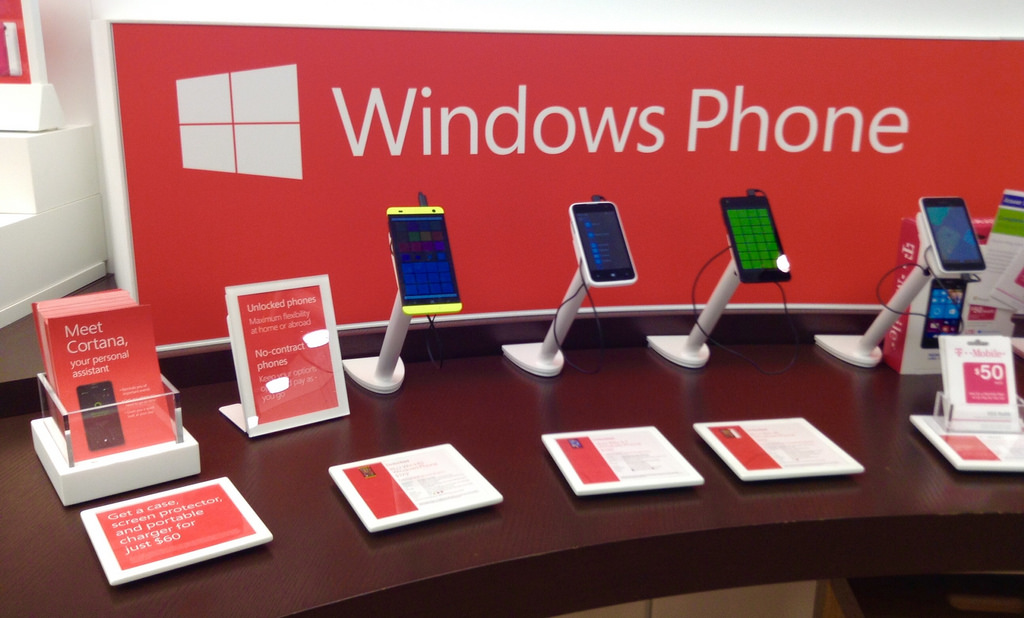Microsoft's worldwide domination of the computer market has powered dividend growth since 2003. Photo: Flickr.com/JeepersMedia
About Microsoft Corporation
Microsoft designs, markets and sells computer software and hardware to consumer and business markets worldwide. The company has offices in more than 100 countries. While Microsoft is best known by consumers for its Windows operating system and Microsoft Office products, the company has had an established business server business for many years and is moving quickly into cloud computing to support mobile services.
The company has six operating segments, divided between Devices and Consumer (D&C), and Commercial end uses:
- The D&C licensing segment is responsible for non-volume (i.e., individual) licensing of the Windows computer and mobile operating systems and Microsoft Office products.
- The Computing and Gaming Hardware segment is responsible for the Xbox gaming and entertainment consoles and accessories, Surface devices and accessories, and video game licensing.
- The Phone Hardware segment is responsible for mobile hardware that resulted from the acquisition of Nokia Devices and Services in April 2014.
- The D&C Other segment is responsible for revenues resulting from the resale of products in the Windows Store and Xbox marketplace, search advertising, and display advertising.
The two Commercial segments are Commercial Licensing, which is responsible for server products (e.g., Windows Server, Microsoft SQL Servers, MS Office for business, etc.), and Commercial Other, which derives its revenues from sales of cloud services and Office 365 to business customers, and consulting services to businesses.
Microsoft’s competitors include Apple, Sony and Samsung in the consumer market, and Amazon, Google, IBM, Oracle and Salesforce.com in the commercial market. To remain competitive, Microsoft spends about 15% of its annual revenues on research and development.
The company is a member of the S&P 500 and Dow Jones Industrial indices and trades under the ticker symbol MSFT.
Microsoft’s Dividend and Stock Split History
Microsoft Corporation began increasing dividends in 2003. The company announces annual dividend increases in mid-September, with the stock going ex-dividend in mid-November.
Microsoft has compounded its payout at an average rate of 16.7% over the last 5 years and 14.8% over the last 10 years.
Like many technology companies, Microsoft grew quickly early in its history. Over time, the company transformed from a growth company to a dividend company. Stock splits came often when Microsoft was a young company; between September 1987 and February 2003, Microsoft split its stock 9 times. The company split its stock 2-for-1 in September 1987, April 1990, May 1994, December 1996, February 1998, March 1999, and February 2003, and 3-for-2 in June 1991 and June 1992. A single share of Microsoft stock purchased prior to September 1987 would have split by now into 288 shares.
Microsoft’s Direct Purchase and Dividend Reinvestment Plans
Microsoft Corporation has both direct purchase and dividend reinvestment plans. You do not need to already be an investor in Microsoft Corporation to participate in the plans. For new investors, the minimum initial investment is $250. Follow on direct investments have a minimum of $25. The dividend reinvestment plan allows full or partial reinvestment of dividends unless you own less than 100 shares, in which case the dividends will be fully reinvested.
The plans’ fee structures are not favorable for investors. When purchasing shares directly through the plan, you’ll be assessed a fee of $2.50 plus a commission of 10 cents per share. When you reinvest dividends, you’ll pay a fee of 5% of the amount reinvested, up to $3.00, plus a commission of 6 cents per share. The dividend reinvestment fee is waived for accounts with less than 100 shares.
The fee when selling your shares is $15 plus a commission of 10 cents per share. This fee will be deducted from the sales proceeds.
Helpful Links
Microsoft Corporation’s Investor Relations Website
Current quote and financial summary for Microsoft Corporation (finviz.com)
Information on the direct purchase and dividend reinvestment plans for Microsoft Corporation
